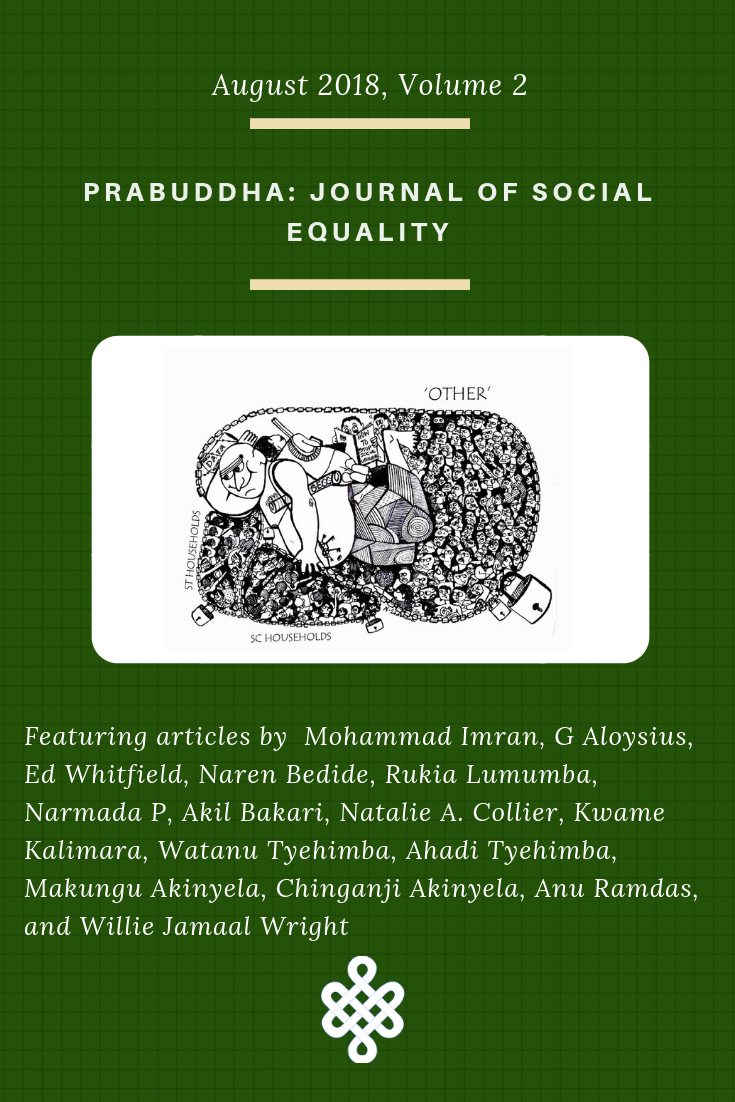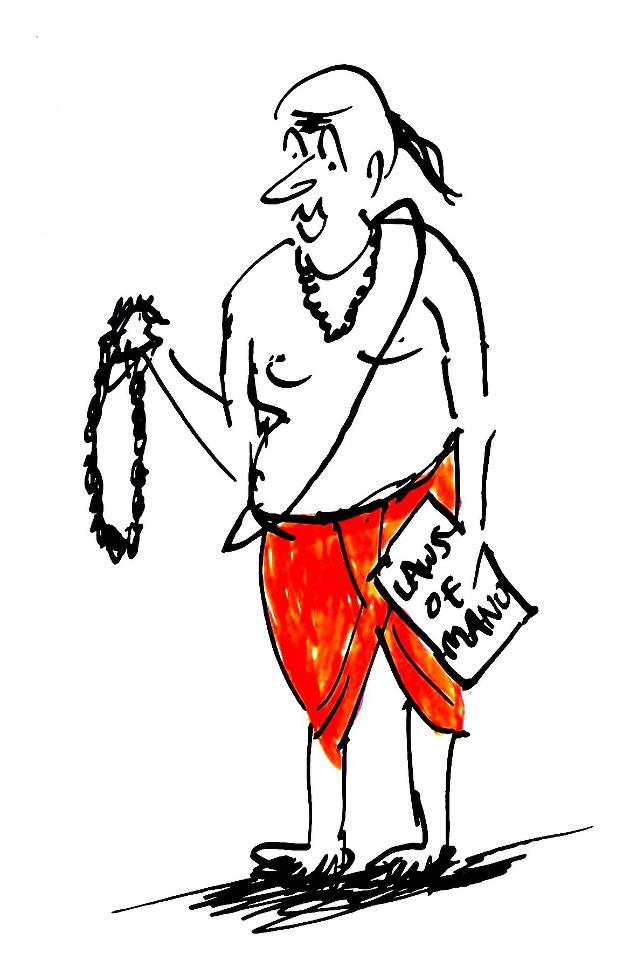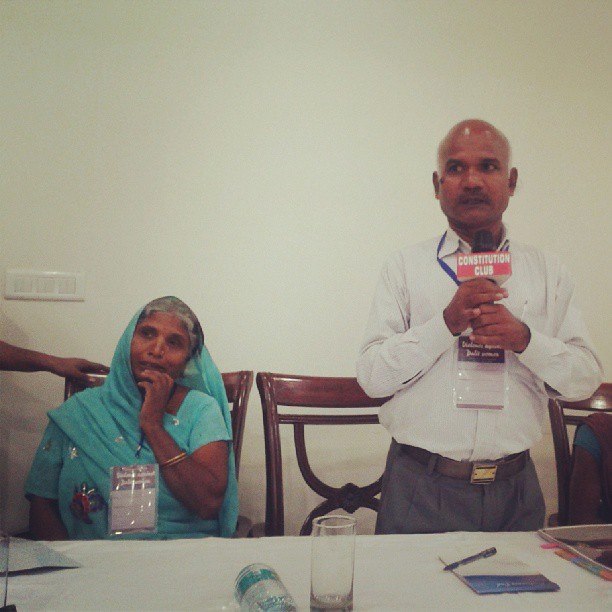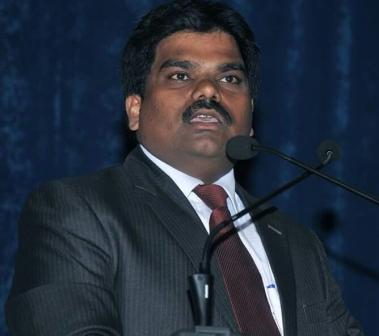Mohammad Imran
 Abstract: The Ghosi community, traditionally associated with milking and herding, today faces unexpected challenges and is struggling to maintain its traditional occupation and livelihood. Earlier, mounting inflation and the increased cost of fodder and cattle maintenance were the issues troubling the community, but the recent socio-political context of ‘Gau Raksha’ (Cow Vigilantism) and Beef Ban are deepening the problems faced by them now. The identity of being a Muslim continues to make them prone to exploitation and violence which is directly hurting their livelihood. Drawing from empirical evidence this paper argues that a rights-based approach needs to be incorporated to deal with the problem of insecurity among milking families of Ghosi community. This paper attempts to examine the socio-economic impact of such events on the community, especially on those who are engaged in milking and herding.
Abstract: The Ghosi community, traditionally associated with milking and herding, today faces unexpected challenges and is struggling to maintain its traditional occupation and livelihood. Earlier, mounting inflation and the increased cost of fodder and cattle maintenance were the issues troubling the community, but the recent socio-political context of ‘Gau Raksha’ (Cow Vigilantism) and Beef Ban are deepening the problems faced by them now. The identity of being a Muslim continues to make them prone to exploitation and violence which is directly hurting their livelihood. Drawing from empirical evidence this paper argues that a rights-based approach needs to be incorporated to deal with the problem of insecurity among milking families of Ghosi community. This paper attempts to examine the socio-economic impact of such events on the community, especially on those who are engaged in milking and herding.
Introduction
‘Caste’ is an intrinsic feature of the Indian subcontinent. The Caste system not only divides the society but also hierarchically associates each caste with a specific form of labour. The labour associated with each caste determines its hierarchy and the hierarchy is characterised by the notion of ‘nature of labour’. The Varnashrama Dharma has divided the Indian society into five major categories which were hierarchical and unchangeable for a person born in a particular Varna. These were Brahmins (associated with religious practices and ceremonies), Kshatriya (associated with the protection of the state from outsiders), Vaishya (engaged with the business), Shudra (the tillers and workers) and Ati Shudra (generally associated with ‘unclean’ works). There were so many castes from the Varna of Shudra who got the treatment of untouchables and were not allowed for accessing resources along with all castes of Ati Shudra (Ambedkar, 1936: 16). The nature of the labour not only stratified the socio-economic conditions of these groups but has made them historically vulnerable.
Among the Muslims there are almost 750 different tribes, castes and communities across the world, out of which 246 are in India (Singh, Khan, ed. 2001: I). Islam and its teachings don’t promote inequality and in principle treats everyone as equals irrespective of one’s occupation, religion, tribe, clan, language or any other identity. But the advent of Islam in India couldn’t change the institution of caste although the notion of caste was challenged by many Islamic spiritual leaders like Khawaja Moinuddin Chishti and Nizamuddin Auliya.
But the converts to Islam replicated the institution of caste into the Islamic frame and also legitimised it (Zainuddin, 2003). Currently, Indian Muslims are divided into three broad categories Ashraf (upper caste), Ajlafs (OBC/occupational castes), and Arzals (Dalits/Untouchables) and further, they get distributed into hundreds of caste groups (Falahi, 2009: 04). Like that of the Varnas of Hinduism, there is also a similar system existing within the Indian Muslims and the OBC Muslims are converts of middle and lower caste Hindus and their identification is done from their traditional occupation (Sachar committee report, 2006:193). The Ghosi community comes under the category of Ajlafs due to the nature of their traditional occupation and has the history of being oppressed.
Pasmanda Mobilisation vis a vis the Representation Continuum
The democratization of the Muslim society has not occurred until now since the upper caste leadership has consciously focused on the politics of identity and centered on a few cultural emotive issues (Alam, 2003). Such politics not only portrayed Indian Muslims as a ‘uniform monolithic community’ but also hid caste-ridden and fragmented realities of the community. However, many movements erupted for the rights of ‘oppressed within the oppressed’ like All India Momin Conference, Pasmanda Muslim Mahaz, All India Backward Muslim Morcha but with the passage of time either they were contained by upper caste led Ulemas (religious scholars) or co-opted by so-called secular parties. The main reason behind the failure of these movements was the inability to provide a critique of Islamic interpretative traditions of the casteist construct like that of Bahujan or Mulnivasi movement which have a strong material basis and inclination towards the production process (Ansari, 2009).
Ambedkar provides four-fold criteria for any preferential treatment i.e. demographic composition, social and economic backwardness with low educational participation. Such treatments provide persons and groups who have been historically denied the social presence and denied public life (Rodrigues, 2005). The Ranganath Mishra committee (2010) on religious and linguistic minorities had suggested to the government to provide 10% reservations for Muslims and 5% reservations to other religious and linguistic minorities. Apart from this, the committee suggested the inclusion of Dalit Converts into Scheduled Castes (SC) and 8.4% reservation to minorities within the 27% quota for OBCs. Though this demand was opposed by the opposition parties but also from the Muslim Intelligentsia. Scholars like Zoya Hasan found the demand of reservation on religious basis problematic since it is against the secular spirit of the Indian constitution but also on the notion that historically Muslims have not faced caste discrimination (Hasan, 2005). The second part of Hasan’s argument seems utopian since the Arzals still face issues like untouchability and discrimination in many spheres of life.
There are two major arguments in favour of caste-based reservation for Muslims – first, OBC reservation didn’t benefit Muslim OBCs compared to other OBCs, therefore a separate reservation should be given to Pasmanda (Backward) Muslims; second, Dalit Muslims should be included in the SC list since they not only face discrimination but also have become more marginalized than other SCs/STs (Ali, 2012). There is also a formula based on the matrix of gender, region and subgrouping of unprivileged castes within the reserved category along with providing deprivation points to the most backward in higher educations and government jobs (Deshpande, 2007).
Reviewing Status of Muslim Backward Castes
Muslim OBCs constitutes 6% of the Indian population and 11.7% of Uttar Pradesh’s population (NSS 62nd, 2005-2006, as cited in the Sachar report: 213). Although the proportion of OBC Muslims within the Muslim population is contested by scholars like Ali Anwar who claim it to be more than 80% which will make their number 11-12% of the total Indian population (Anwar, 2005). Despite being in good numbers, the participation of OBC Muslims in higher education, organized sector and in bureaucracy is negligible. The per capita expenditure of OBC Muslim is much lower than the national average, the participation of Muslim OBCs at the graduate level is 2.31% and at postgraduate level is 0.96% (Sachar report, 2006: 213- 216) and according to 2011 census data, 42.7% Muslims are illiterate. The representation of OBC Muslims in central government jobs is very low. Their representation in railways, central PSUs, and State Public Service Commissions is lower than 1% while in Central armed forces they have a representation of 3.6%. The Sachar committee also found out that they are the most vulnerable in entrepreneur based and small-scale businesses (pp:216).
Ghosi Community
According to Ambedkar (1936), caste is not a division of labour, but it is the division of labourers, the division of labourers separates one from another but also gives a hierarchical notion attached to each kind of labour. Traditionally the Ghosi community is associated with milking and are considered as herdsmen, they keep buffaloes, cows, camel and other cattle for the purpose of milking, cattle trade and the business associated with it (Singh, Khan ed.2001: 470-73). They are followers of Islam and are predominantly Sunni and located mainly in Northern and North-West regions of India. There is a debate over the origination of this community. In Uttar Pradesh, they are considered as converts of Ahir caste. On the other hand, in Rajasthan, they claim to be of Gujjar origin (Crooke, 1896: 419). Although political leaders of Ghosi community like Asghar Ali have a different opinion regarding the origination and historicity of the community. And the rejection of claim of previous anthropological studies is based upon their orientation being ‘colonial and biased.’ The Ghosi community has its linkages to the invasions by Muslim invaders like Muhammad Ghori and the troops (lashkar) brought in by them. The conversion to Islam was carried out by the various caste groups and those who remained associated with milking were called Ghosi. This claim is evidenced also by the different Shizre/Gotra found in the community and their names like Nat (used for converts from dancing and performing caste), Babhani (used for Brahmin converts), Solanki, Deshruth, Mehlud (all three used to represent Rajput conversions) etc. (Ani, 1999: 03). The subdivisions in the community are based on a strong system of Shizre/Gotra. According to this system marriages within the subdivisions endogamy is avoided. Along with this, there are subdivisions of Lashkariya Ghosi, Badkawa (those who have lost/forgotten their Gotra or mixed their Gotra by marrying outside the caste) and Chotkawa Ghosi (those who have maintained their Gotras and followed the traditional customs). These classifications can be easily traced in the indigenous knowledge sources like traditional songs and tales (Phatma, 2002: v).
The culture and customs of Ghosi community used to be a mixture of Hinduism and Islam but nowadays they are continuously rectified by Islamic principles (Ahmad, 2015: 7-8). Although there are so many practices which are quite similar to the customs of other local communities that can be seen during the ceremonies of birth, marriage, and death and the songs sung during various rituals. In most parts of India, this community is settled alongside the rivers, ponds, railway stations etc. (Anis, 1999:03). With the increased urbanization they are losing the natural resources of water and green fodder, and they are forced to set up their habitations or stables outside the urban spaces. Also, with reference to their livelihood practice, the community members are considered as ‘Producer of pollution and diseases’.
Please read the full article here on Prabiddha: Journal of Social Equality
~~~
To cite: Imran, M. (2018). Impact of ‘Cow Politics’ on Muslim Community: A case study of Ghosi community of North India. Prabuddha: Journal Of Social Equality, 2(1), 59-74. Retrieved from http://prabuddha.us/index.php/pjse/article/view/22
~
Note: The second issue of Prabuddha: Journal of Social Equality carries articles by authors from anti-caste traditions and black liberation movements exploring the myths of inherent essence or “svabhava” of humans. Authors from the anti-caste traditions examine ‘The Brahmin Svabhava—uninterrupted access to surplus, labor, and property over the ages.’ And authors from Black liberation movements examine ‘White supremacy and its uninterrupted access to surplus, labor, and property over the ages.’ Round Table India is happy to share excerpts from their articles.










